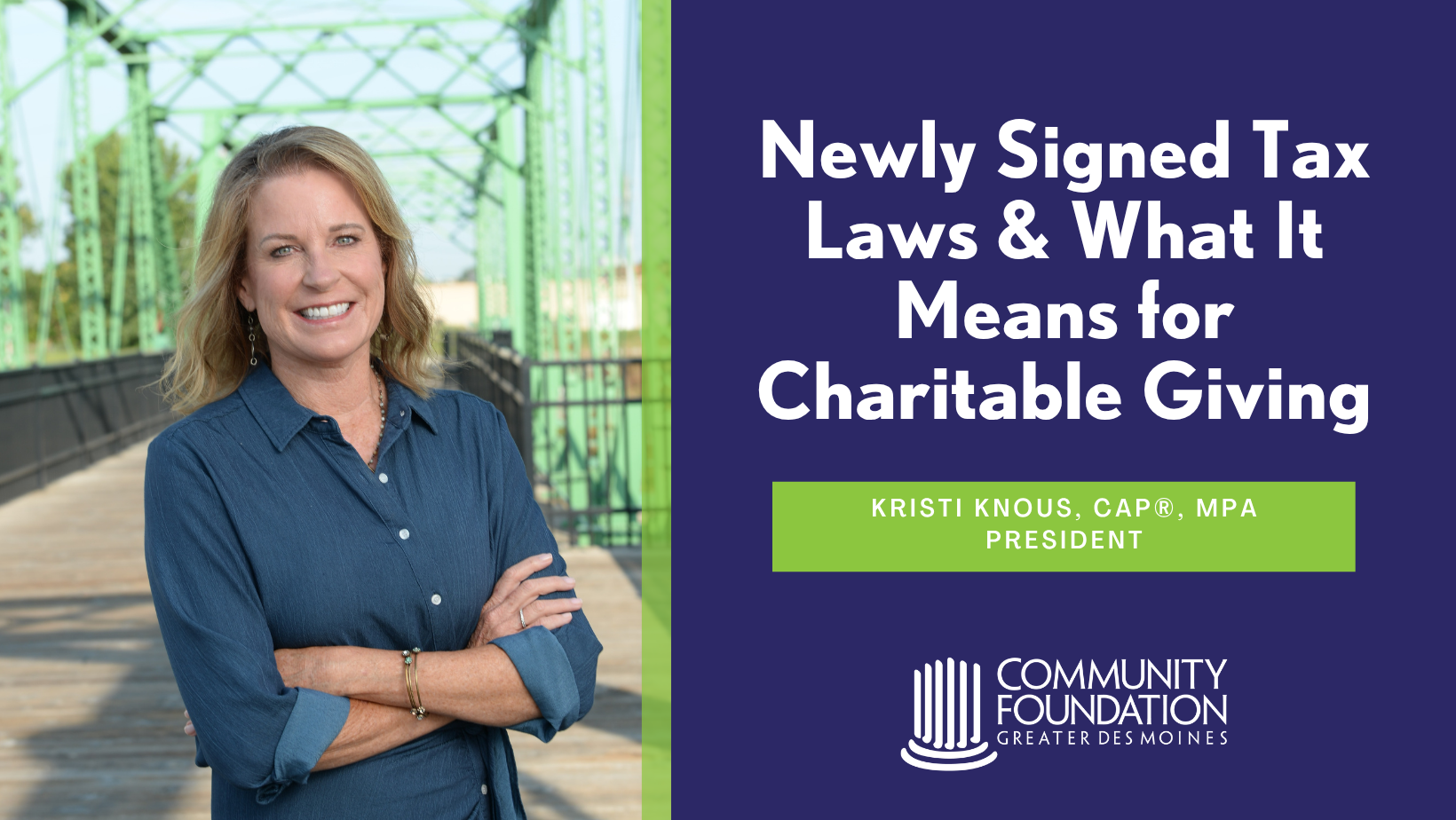Newly Signed Tax Laws & What It Means for Charitable Giving
Jul 17, 2025

The new federal legislation that was signed on July 4, 2025, may reshape and have ripple effects across the landscape of charitable giving. The new tax law extends provisions of the Tax Cuts and Jobs Act, which were set to sunset at the end of 2025, and introduces several changes that may have a lasting impact on philanthropy.
Key Provisions that Will Remain
Income Tax Brackets
The 10%, 12%, 22%, 24%, 35% and 37% tax rates are being extended.
Higher Standard Deduction
Currently, the standard deduction is $15,750 for single filers and $31,500 for married couples filing jointly. This standard deduction will be extended and indexed for inflation in the future.
Takeaway: Non-cash gifts, such as appreciated securities, real estate, business interests, personal tangible property, retirement plans, life insurance and agricultural assets may be a more tax advantageous way to give.
Higher Deduction Limit for Cash Gifts
The 60% of adjusted gross income contribution limitation for cash gifts to public charities has been extended for taxpayers who itemize.
Takeaway: Consider blended gifts that combine cash and non-cash assets to maximize donor deductions and impact.
Higher Estate Tax Exemption
The federal estate and gift tax exemption will increase to $15 million per individual and $30 million for married couples filing jointly.
Takeaway: Donors who are under the exemption amount may shift towards gifts that will receive tax benefits during their lifetime, including appreciated securities, real estate, business interests, personal tangible property, retirement plans, life insurance and agricultural assets.
Tax Break for Non-Itemizers
An above-the-line charitable deduction will allow taxpayers who take the standard deduction to deduct $1,000 for single filers and $2,000 for married couples filing jointly. Gifts to donor advised funds are excluded.
Takeaway: A new opportunity for donors, with the potential to re-motivate charitable giving amongst a significant number of households.
Giving Threshold for Itemizers
A minimum charitable contribution rate for taxpayers who itemize their deductions to give at least 0.5% of their adjusted gross income to receive a tax benefit.
Takeaway: Donors affected may want to accelerate their giving in 2025, to avoid losing tax benefits next year.
Limitation on Charitable Deduction for the Top Tax Bracket
The top income bracket is currently 37%, and the new law caps the tax benefit at 35% for charitable contributions.
Takeaway: High-income donors may choose to accelerate their giving in 2025, to avoid losing tax benefits next year.
Corporations Required to Give More to Keep Their Deductions
The new law requires corporations to donate at least 1% of their taxable income to qualified charities to be eligible for charitable deductions.
Takeaway: Corporations may want to accelerate their giving in 2025 to avoid losing tax benefits next year. In future years, corporations may consider bunching to reach this threshold.
Reflections
Individuals and organizations are encouraged to consult with their professional advisors to determine how this new information may apply to their specific circumstances.
Please know the Community Foundation is committed to working alongside donors, professional advisors and the nonprofit sector to navigate these changes.
If you are interested in learning more about ways the Community Foundation can help, please reach out to a member of our dedicated team.
This article has been adapted from The Stelter Company's original content, with permission. Originally published by Lynn M. Gaumer, J.D., CAP®, this article has been edited for length and clarity. Adapted from “New Tax Law: What’s Staying, What’s Changing and What It Means for You”, originally published on July 4, 2025.